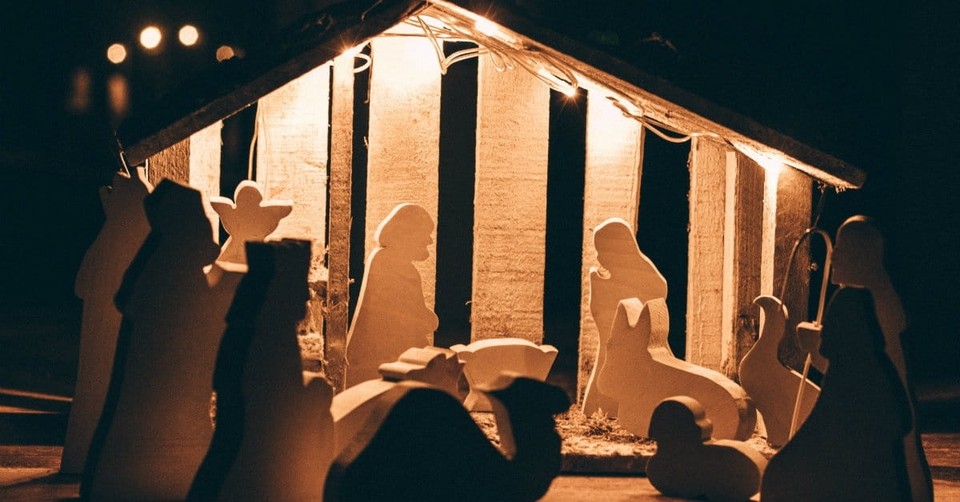Why are Jesus’ Genealogies in Matthew and Luke Different?

This post is adapted from Four Portraits, One Jesus: Jesus’ Birth, Childhood, and Early Ministry, an online course taught by Dr. Mark Strauss on ZondervanAcademic.com. Sign up for free while the course is still available.
The birth narratives in both Matthew and Luke help answer the question, “Who is Jesus and where did he come from?” One of the ways each book does this is by recounting Jesus’ genealogy.
The problem is: the genealogies are different.
The Old Testament predicted that the Messiah would come from the line of David. Both Matthew and Luke provide genealogies of Jesus that confirm he was a descendent of David—therefore, a legitimate Messiah. He was a legitimate claimant to the throne of Israel.
But they differ in an important way: Matthew follows the line of David’s son Solomon, while Luke follows the line of Nathan, another Son of David. The end result is two distinct genealogies.
How do we account for this?
Some argue that either Matthew or Luke got it wrong. They created or borrowed a genealogy in order to provide Jesus with a legitimate ancestry. Or they accuse later Christians for artificially creating a genealogy to provide Jesus with a Davidic lineage after the fact.
Yet there are three other possible explanations for the two different genealogies. Let’s explore these.
1. ONE OF THE GENEALOGIES IS ACTUALLY MARY’S.
The simplest solution is that we have genealogies of both parents of Jesus—Joseph and Mary.
In this case, Luke gives us Mary’s genealogy, while Matthew gives us Joseph’s genealogy.
This makes good sense, since Luke’s birth narrative focuses on Mary. Luke tells the story from her perspective.
This proposal is sometimes linked to the judgment pronounced against the line of Solomon by Jeremiah, who prophesied that no descendant of Jehoiakim (Jeremiah 36:30) or his son Jechoniah (Jeremiah 22:24-30) would sit on the throne of David. Jesus avoided this judgment because he was the legal descendent—i.e. through Mary—rather than the physical descendent of David—through Joseph.
Matthew, on the other hand, follows Joseph’s side of the story. Matthew’s narrative moves through the dreams Joseph has.
One problem with this suggestion is that throughout Luke’s birth narrative, he stresses that Joseph is a descendent of David. He never mentions Mary’s Davidic descent. So, despite Luke’s emphasis on Mary in his birth narrative, it would be surprising if his genealogy is Mary’s.
2. ONE GENEALOGY IS A ROYAL OR LEGAL GENEALOGY, AND THE OTHER IS A PHYSICAL GENEALOGY.
Another possible explanation for the two different genealogies is that Matthew presents a royal or legal genealogy, while Luke gives a physical, or actual, genealogy.
In other words, Matthew lists the official line of Davidic kings, not Jesus’ actual descendants. His point is to show that Joseph is related to that line.
In this view, Luke would be giving us the actual, physical descendants—in other words, a genealogy in the way we’re accustomed to thinking about it.
This may help provide a theological point, but it doesn’t solve the larger problem created by having two genealogies: Joseph can’t have two fathers.
3. JOSEPH HAD TWO FATHERS.
How can someone have two fathers? That’s a fair question—it’s not physically possible.
However, there are two reasons the text can actually be read this way.
First, some suggest that Mary had no brothers to carry on her father’s name at her marriage, so Heli (Joseph’s father according to Luke) adopted Joseph as his own son. This would then give Joseph two genealogies—his own genealogy and Mary’s genealogy.
Second, it’s also possible to read Joseph’s genealogy in the context of the Old Testament law of levirate marriage.
Levirate marriage is described in Deuteronomy 25:5: “If brothers are living together and one of them dies without a son, his widow must not marry outside the family. Her husband’s brother shall take her and marry her and fulfill the duty of a brother-in-law to her.”
In other words, this law states that a brother of a man who died should marry his brother’s widow to produce heirs for him.
In this case, Heli—Joseph’s father according to Luke’s genealogy—and Jacob—Joseph’s father according to Luke’s genealogy—were either brothers or half-brothers. When one died, the other married his widow, producing Joseph and his offspring. This would leave Joseph with two fathers—both Heli and Jacob—one a natural father, and the other a legal father. From the text, we can’t tell which one is his natural father and which one is his legal father.
The important point is that this could explain why Joseph might have two fathers and therefore two distinct genealogies.
LEARN MORE
You’ve heard the Christmas story a hundred times. This year, deepen your understanding.
In a new online course, Dr. Mark Strauss takes a deep dive into the story of Jesus’ birth as it’s told in Matthew and Luke.
When you sign up, you will discover:
- Why it matters that Jesus was born in Bethlehem, and not somewhere else
- Who the magi were and where they came from
- The evidence that Matthew and Luke are writing from historical traditions, and not just creating stories to fit a theological agenda
- Why the “inn” Mary and Joseph were turned away from isn’t what you think it is
- The background and historical context of Jesus birth—the Roman census, Herod’s attempt to kill the infants of Bethlehem, John the Baptist, and more
Hurry—this free offer expires on December 25th, and after that date the course will no longer be available.
This article originally appeared on ZondervanAcademic.com. Used with permission.
Mark Strauss is professor of New Testament at Bethel Seminary in San Diego. He has written The Davidic Messiah in Luke-Acts, Distorting Scripture?: The Challenge of Bible Translation and Gender Accuracy, Luke in the Zondervan Illustrated Bible Background Commentary series, and Mark in the Zondervan Exegetical Commentary on the New Testament.
Image courtesy: Unsplash.com
Publication date: December 20, 2016
Originally published December 20, 2016.







